Top 7 Most Beautiful Historical Sites in Jamaica
The stunning mountains, jungles, attractive coastal resorts, and coral-lined beaches of Jamaica all call out for an adventure. If you're planning a trip to ... read more...Jamaica and aren't sure where to go, this list of "Most beautiful historical sites in Jamaica" is for you!
-
Devon House, erected in 1881, was the home of George Stiebel (1820–1896), Jamaica's first black billionaire. He made his fortune in Venezuela before returning to Jamaica. He was appointed as the Custos of St. Andrew, a prominent civic position. His home has been rebuilt and is now a house museum and National Heritage Site. Here, the arts, education, and entertainment coexist to provide an environment that appeals to all senses for both Jamaicans and tourists.
Devon House, with its rich history and cultural variety, is one of Jamaica's most recognized sites. It's a Georgian-style home constructed on what was previously Devon Penn property.
The house's owner, George Stiebel, was the son of a German Jew and a Jamaican domestic. He worked as a carpenter, a shipper, and a gunrunner. He made his money in Venezuela, though, after investing in a gold mine.
This wonderful property, with its rich history, serves as a lovely "gathering spot" for the hundreds of people that pass through. Its surroundings are serene, with lush green grass, tall palm trees, a water fountain, and a gorgeous assortment of flowers that give a soothing ambiance for the mind and spirit.Loction: Kingston 10, Jamaica
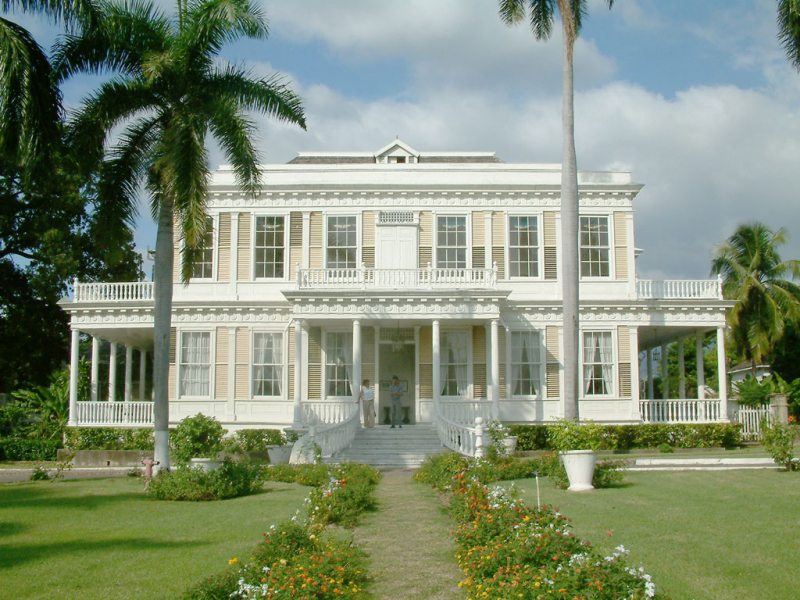
Photo: Wikipedia 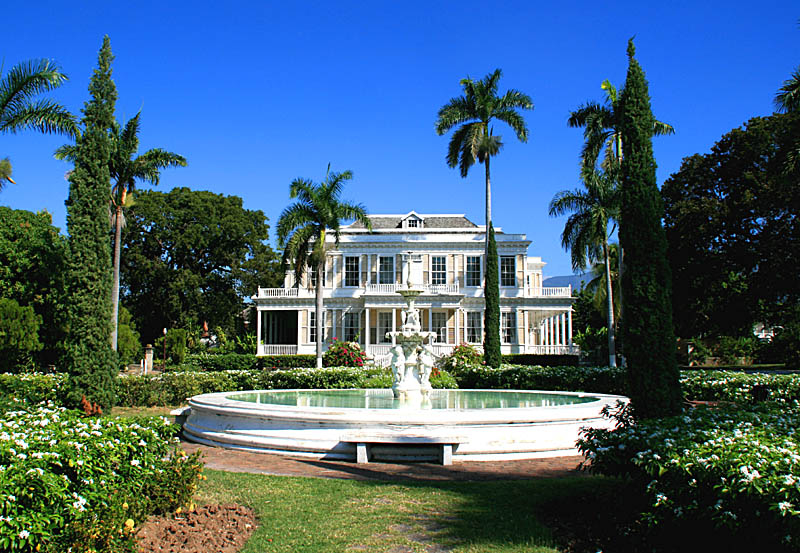
Photo: Tourmatch.rezdy -
Morant Bay Court House, St. Thomas, second half of the 18th century; scene of the Morant Bay Rebellion's terrible conclusion in 1865.
The Morant Bay Courthouse, the site of the Morant Bay Rebellion in 1865, is one of the most important structures in the island's history, although it has been damaged by several fires, the most recent in 2007.
It is one of the most beautiful historical sites in Jamaica. It is now a burned-out ruin, but a recent structural inspection by two FGSJ experts determined that the shell is sound and that a restoration is entirely possible. In 2010, a FGSJ tour group toured the ruin, and we were in contact with the Jamaica National Heritage Trust about plans to repair the courthouse. If the restoration is successful, the FGSJ expects to be able to fund this vital effort. Experience has repeatedly proven that restoring a historic building and giving it a role appreciated by the local community increases the likelihood of it being cared for and looked for.
Location: Church Corner, Jamaica
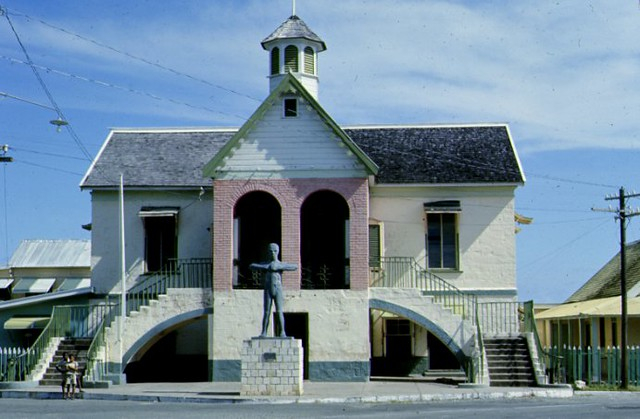
Photo: Flickr 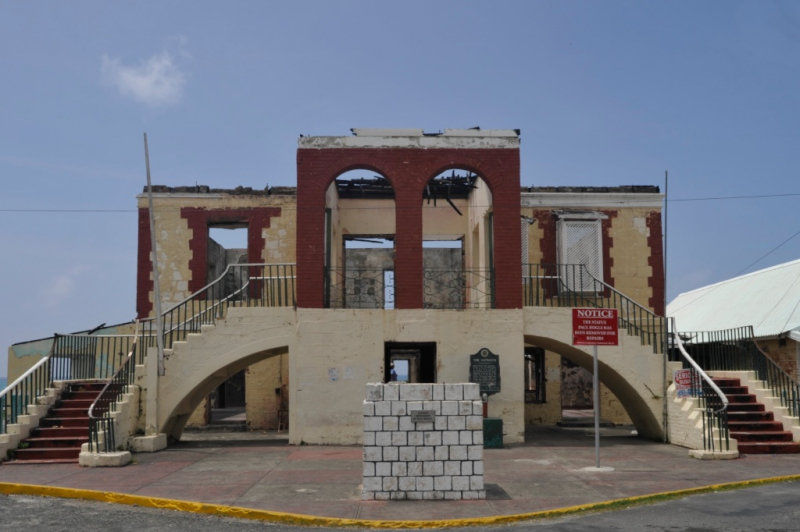
Photo: fgsj.org -
Kingston's National Heroes Park is a botanical garden. National Heroes Park, Kingston's largest open area, is 50 acres in size and has multiple monuments; it is the burial location of many of Jamaica's National Heroes, Prime Ministers, and cultural luminaries. The park's surrounding area is also known as National Heroes Park.
The park was founded in 1783 as a racing track called "Kingston Race Course" with a one-mile track used for horse races and an usual purse of 100 pounds sterling. Knutsford Park received a new track in 1905, and the previous track was dubbed "George VI Memorial Park" in honor of King George VI of the United Kingdom and transformed into a public park. The park's name was altered again when Jamaica got independence in 1962 to the name it now holds.
National Heroes Park is now managed by Jamaica's National Solid Waste Management Authority's Parks Division. A traditional honor guard from the Jamaican Defence Force provides security, with a Changing of the Guard taking place every hour. The park's repairs are being overseen by Jamaica's Ministry of Local Government, Community Development, and Sport.
Location: Kingston, Jamaica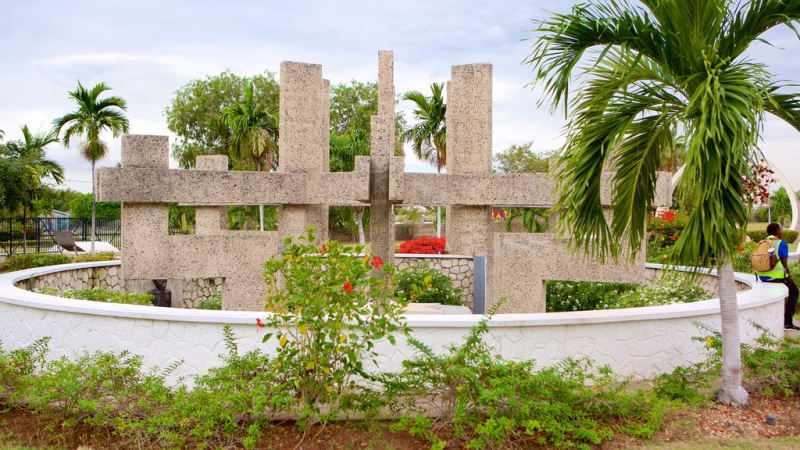
Photo: Expedia 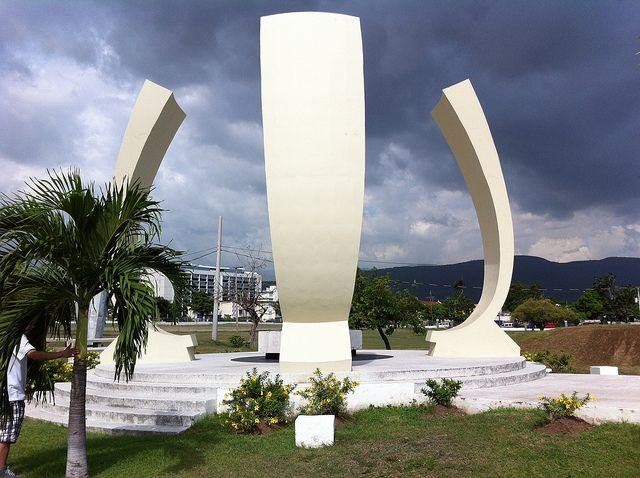
Photo: Pinterest -
Rose Hall is a Jamaican Georgian plantation mansion that has been turned into a historic house museum. It is at Montego Bay, Jamaica, and has a panoramic view of the shore. It was thought to be one of the country's most spectacular plantation grand homes by the 1960s, but it was later renovated. The museum depicts the estate's slave past as well as the tale of the White Witch of Rose Hall.
Rose Hall is commonly recognized as the most visually spectacular and well-known residence in Jamaica. It is a Jamaican Georgian-style home with a stone foundation and a plastered top level high on a hillside with a panoramic view of the seashore.
Henry Fanning purchased 290 acres of caneland for £3,000 in 1742. It had previously been known as "True Friendship" and belonged to Richard Lawrence. On July 16, 1746, Henry married Rosa Kelly, but he died soon after. His widow inherited the estate and married George Ash, a local plantation owner who carried out Fanning's dream of constructing Rose Hall. It was built for £30,000 and richly ornamented with carved mahogany and stone. Ash, on the other hand, died in 1752. Rosa married for the third time in May 1753 to Norwood Witter, who lived until 20 May 1765 and consumed a large portion of her riches. She married John Palmer, a widower who owned the adjacent estate "Palmyra," in May 1767.
Location: Montego Bay, Jamaica
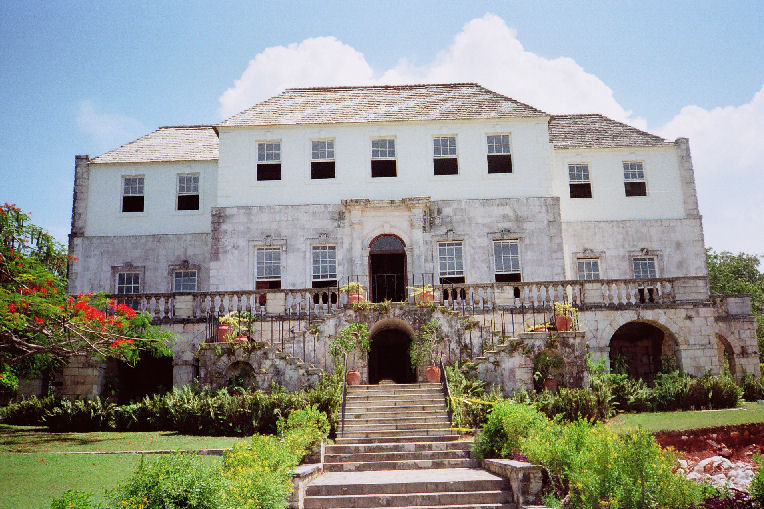
Photo: Embracingspirituality.wordpress 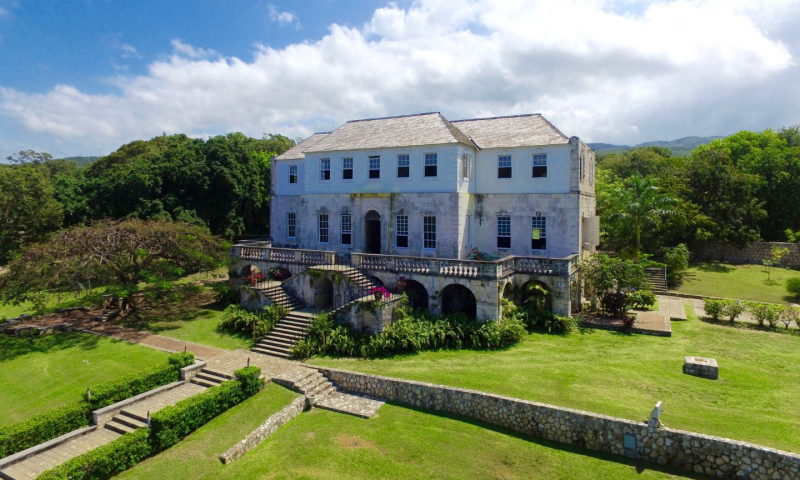
Photo: Rosehall.com -
Ranked 5th in the list of most beautiful historical sites in Jamaica is Bob Marley Museum. The Bob Marley Museum is the iconic reggae musician Bob Marley's old home and studio. It is located in Kingston, the capital, and was Marley's residence until his death in 1981. It was also the home of The Wailers' Tuff Gong record label, which was created in the 1970s.
This is a must-see if you are a lover of Bob Marley and his music. The tour provides a very personal look at Bob's life as well as the history and philosophy of his music. The one-hour trip also details Bob Marley's life when he relocated "uptown."
Bob's gold and platinum recordings are displayed throughout the walls of the house - Exodus, 1977, Uprising, 1980, and Legend, 1984. Many of Marley's notable accolades may be found if you go through. Rastafarian religious cloaks, Bob Marley's favorite denim shirt, and the Jamaican government's Order of Merit are all on display. The bedrooms are on the second story of his house. One of the rooms displays media clippings from Marley's celebrity days. Another chamber recreates Bob Marley's initial record store, Wail'n Soul.
The most remarkable area is Marley's unadorned bedroom, which has been preserved exactly as it was, with his star-shaped guitar sitting by his bedside. A botched assassination attempt on Bob Marley took place in this bedroom.
Location: Kingston, Jamaica
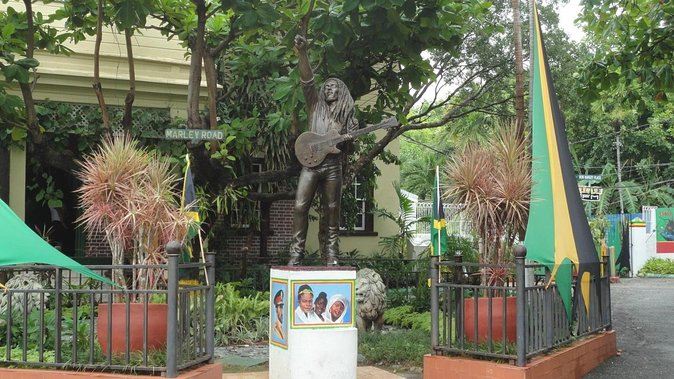
Photo: Viator 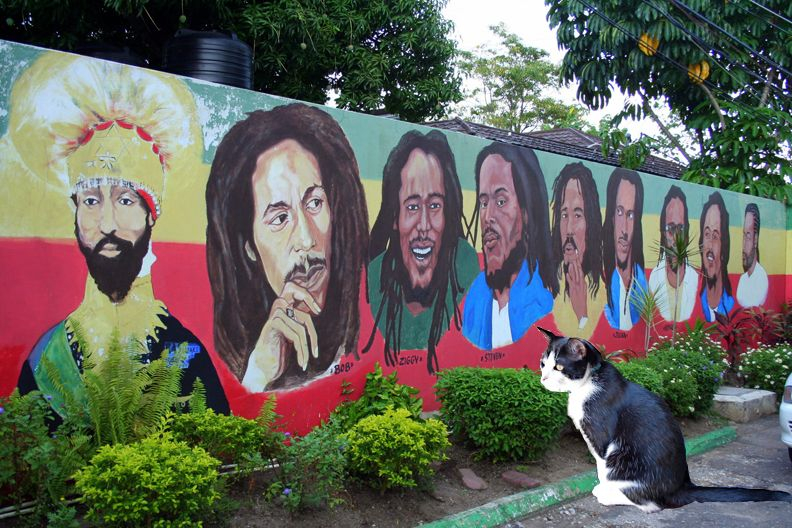
Photo: Pinterest -
The Green Grotto Caverns are display caves and a popular tourist destination on Jamaica's north coast. The cave's structure is significantly different from inland systems; the cave is a Flank Margin Cave (ancient mixing chambers at the edge of the fresh water lens with the sea water) with two well-defined levels that appear to indicate two eras with various sea-levels. A crystal-clear subterranean lake may be found in the deepest cavern.
There is a part of "wild caverns" with relatively untouched environment in addition to the publicly accessible areas of the cave. The cave system is linked to the nearby coastal waters hydrologically.
The caverns' first known residents were Arawak Indians, who left pottery pieces and adzes. The caverns were utilized as a hideout by the Spanish who were being forced out of Jamaica while it was a British colony. The caves were often utilized by fugitive slaves, earning the name Runaway Caves. Between the two world wars, they were used by smugglers transporting armaments to Cuba, and later in the Second World War, the Government of Jamaica utilized the cave's entrance as a storage facility for rum in barrels.
Location: Discovery Bay, Jamaica
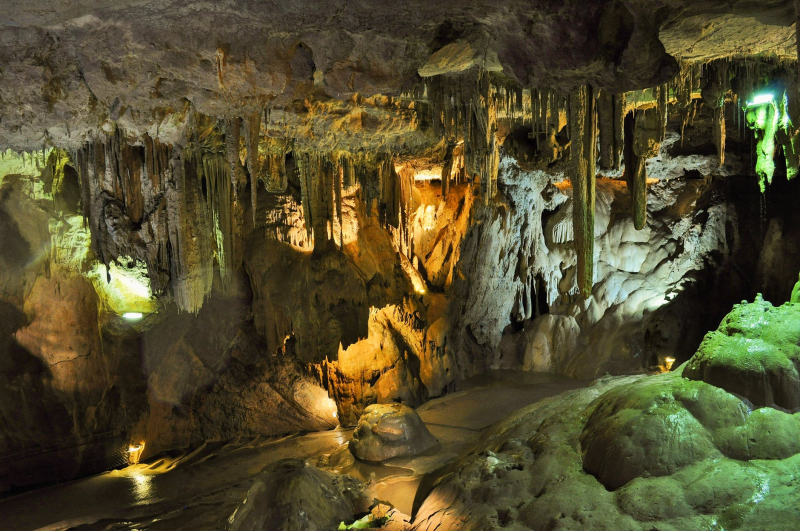
Photo: Jamaican Treasures 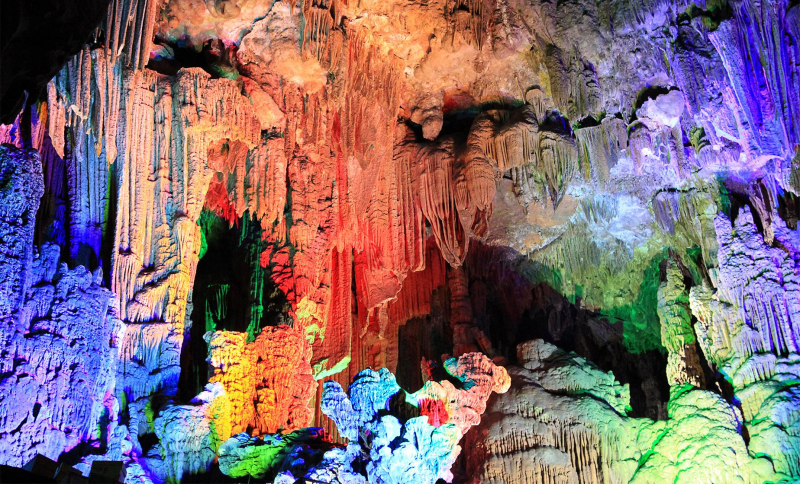
Photo: Shore Excursions Group -
Port Royal is a settlement in southern Jamaica located at the end of the Palisadoes, near the mouth of Kingston Harbour. It was founded by the Spanish in 1494 and was once the greatest city in the Caribbean, serving as the center of trade and commerce in the Caribbean Sea by the late 17th century. On June 7, 1692, an earthquake with a resulting wave destroyed it. It has been periodically devastated by hurricanes. Another powerful earthquake struck in 1907.
Privateers were previously encouraged to attack Spanish warships at a period when lesser European states were hesitant to confront Spain directly. As a port city, it was known for its extravagant displays of riches and lax morality. During the 17th century, it was a favorite homeport for English and Dutch-sponsored privateers to spend their loot. When those nations stopped providing letters of marque to privateers against Spanish treasure ships and properties in the late 16th century, many of the sailors became pirates. Throughout the 17th century, the city remained their major base. Pirates from all over the world gathered in Port Royal, some from as far away as Madagascar.
Following the 1692 accident, the neighbouring town (and later, city) of Kingston gradually took up Port Royal's economic role. In 1999, plans were created to rebuild the little fishing village as a heritage tourism destination for cruise ships. It was thought that it may benefit on its unique legacy, with archaeological discoveries from pre-colonial and privateering years serving as the basis for potential attractions.
Location: Jamaica
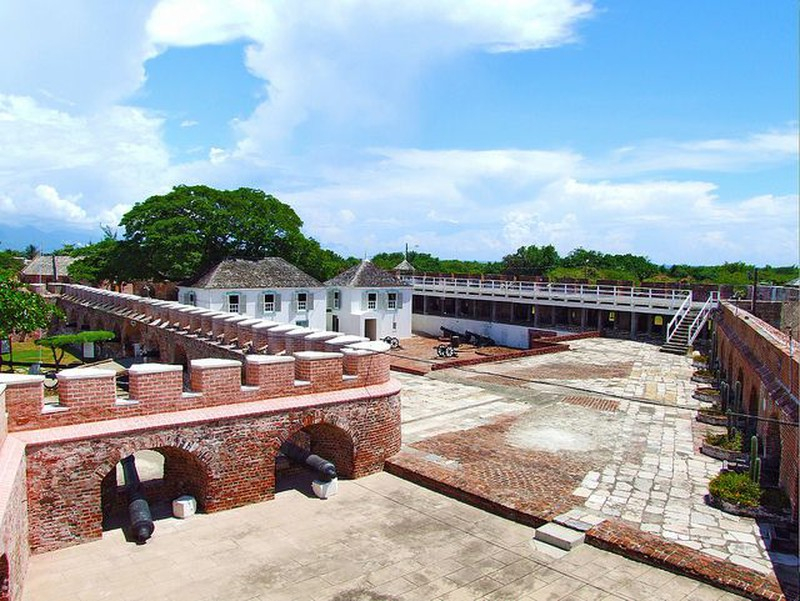
Photo: Kienthuc 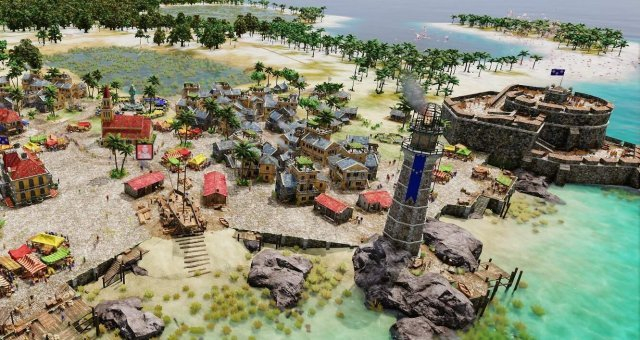
Photo: Game Gudes




























